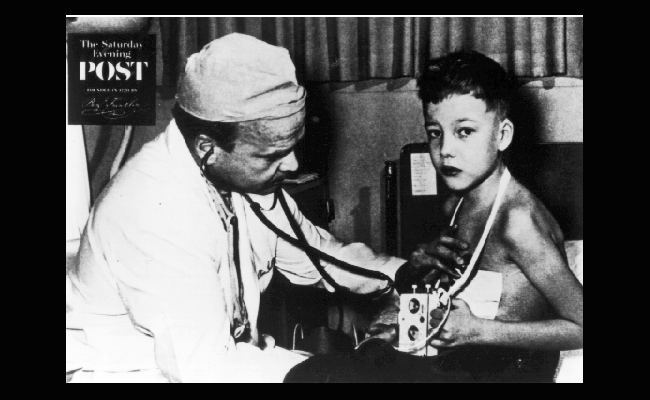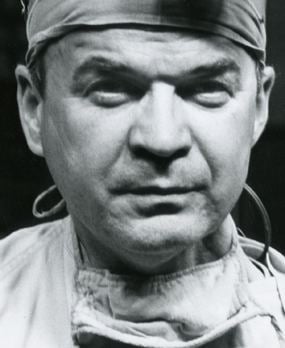Role Surgeon | Name C. Lillehei | |
 | ||
Born October 23, 1918 ( 1918-10-23 ) Minneapolis, MinnesotaUnited States Known for being first to pioneer open heart surgery. Books Congenital Malformations of the Heart: Embryology, Anatomy, and Operative Considerations Awards Gairdner Foundation International Award People also search for Morley Cohen, Herbert Warden, Richard Varco | ||
16th annual c walton lillehei resident forum winner dr jeevan nagendran
Clarence Walton "Walt" Lillehei (October 23, 1918 – July 5, 1999), was an American surgeon who pioneered open-heart surgery, as well as numerous techniques, equipment and prostheses for cardiothoracic surgery.
Contents
- 16th annual c walton lillehei resident forum winner dr jeevan nagendran
- Lillehei Heart Institute Ribbon Cutting Ceremony 2001
- Background
- Career
- Honors
- Personal life
- References

Lillehei Heart Institute - Ribbon Cutting Ceremony, 2001
Background

Clarence (often referred to as "Walt") Lillehei was born in Minneapolis, Minnesota, the son of Dr. Clarence Ingvald Lillehei (1892-1973) and Elizabeth Lillian (Walton) Lillehei (1891-1973). He attended the University of Minnesota at the age of 17. He earned 4 degrees at the University of Minnesota, including his B.S. (with distinction) in 1939, his M.D. (Alpha Omega Alpha) in 1942, his M.S. in physiology in 1951, and his Ph.D. in surgery in 1951.
Career

A Department of Surgery professor at the University of Minnesota from 1951 to 1967, Lillehei participated in the world's first successful open-heart operation using hypothermia. In 1944, Alfred Blalock at Johns Hopkins University had begun successfully performing surgery on the great vessels around the heart to relieve the symptoms of tetralogy of Fallot, demonstrating that heart surgery could be possible. Young and brash, Lillehei completed, at age 35, the first successful surgical repair of the heart on September 2, 1952. That historic operation, using hypothermia, was led by his longtime friend and colleague, Dr. F. John Lewis.

Hypothermia, however, only gave a brief window (up to 10 minutes) during which surgery could be performed and was therefore not suited for complex congenital defects within the heart. To resolve this problem, Lillehei performed surgeries using cross-circulation, in which a donor was hooked up nearby to take up the pumping and oxygenation functions of the patient as he was being operated on. Using this technique, Lillehei led the team that performed successful repair of a ventricular septal defect on March 26, 1954. Although the repair was successful, the patient, 13-month-old Gregory Glidden, died 11 days later of suspected pneumonia. Lillehei and his team continued to use cross-circulation for a total of 44 open-heart operations in the following year, of which 32 patients survived. These surgeries included the first repairs of the atrioventricular canal and tetralogy of Fallot. In July of that year, a successful operation was performed on patient Michael Eugene Shaw of Litchfield, Minnesota.
Lillehei cooperated with Professor Moshe Gueron and Professor Morris J. Levy, who were both considered among "The Cardiology Founders of Israel" by doing the first Cardiac Puncture Catheterization research which was experienced in 80 patients during 1964.
In 1958, Lillehei was responsible for the world's first use of a small, external, portable, battery-powered pacemaker. It was invented at his behest by Earl Bakken, whose then-small company, Medtronic, designed and repaired electronics for the University of Minnesota hospital. After the introduction of the first widely used prosthetic heart valves by Albert Starr in 1961, Lillehei also developed and implanted several innovative designs: the Lillehei-Nakib toroidal disc (1966), the Lillehei-Kaster pivoting disc (1967), and the Kalke-Lillehei rigid bileaflet prosthesis (1968).
A dedicated educator, Lillehei trained more than 150 cardiac surgeons from 40 nations, including Norman Shumway and Christiaan Barnard, who formed half of the quartet which pioneered heart transplantation (the others being Richard Lower and Adrian Kantrowitz). In 1967, he was appointed Lewis Atterbury Stimson professor and chairman of the surgery department at Cornell Medical Center, New York. He returned to St. Paul, Minnesota, in 1975, where he became the director of medical affairs at St. Jude Medical, Inc. He was also named a clinical professor in the Department of Surgery at the University of Minnesota.
Honors
Lillehei's honors include the Bronze Star for World War II service in Italy, the 1955 Lasker Award, the Order of Health Merit Jose Fernandez Madrid by the government of Colombia in 1959, induction in 1993 into the Minnesota Inventors Hall of Fame, and the 1996 Harvey Prize in Science and Technology. In 1966-67, he served as president of the American College of Cardiology.
Personal life
In 1946, Dr. Lillehei was married to Katherine Ruth (Lindberg) Lillehei (1921-2012) with whom he had four children. Following his death in 1999, he was buried at the Fort Snelling National Cemetery.
His youngest brother, Dr Richard C. Lillehei, was a notable transplant surgeon in his own right, having participated in the world's first successful transplant of a pancreas in 1967 and the first known human transplant of the small and large intestines, but died suddenly on April 1, 1981 from a heart attack while jogging in Florida at age 53.
